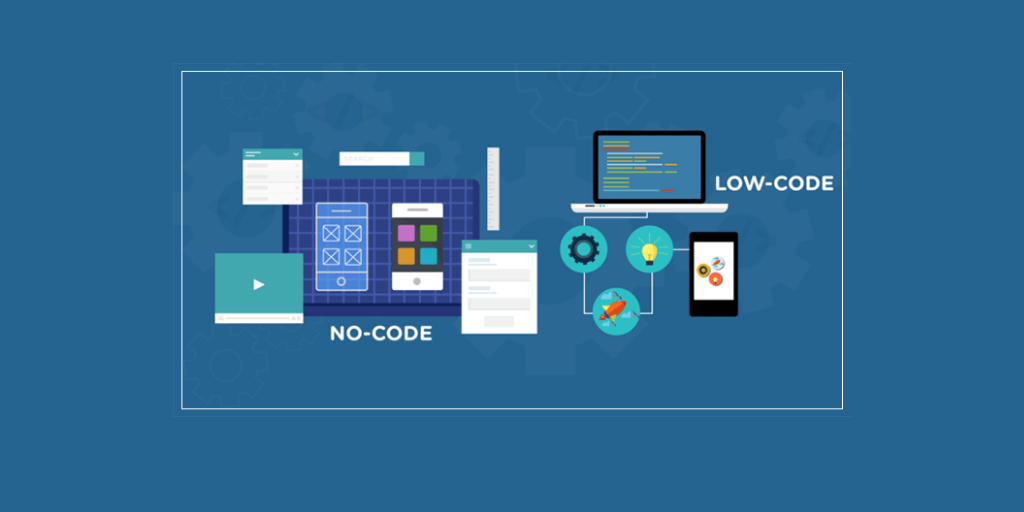
Science and technology have advanced at a breakneck pace, fueled by the global demand for agile software solutions. As a result, organizations and individuals are on their toes as they try to keep up with the latest trends, breakthroughs, and innovations in various industries. Furthermore, smartphones have evolved from basic luxury to a vital necessity.
Many organizations have quickly moved online as a result of the increased need for more agile tools and solutions to better client experiences. As a result, a number of software have been developed with the help of no-code platforms in order to promote the much-needed transformation. You can learn more about the development process by visiting no code, a portal dedicated to no code information.
No code has demonstrated as many advantages over traditional platforms as Node.js as a platform for developing apps. No-code platforms provide more flexibility and freedom for app creation, making them one of the most sought-after alternatives today. Any citizen developer can use the platforms to create a wide range of software products. This article focuses on some of the most compelling arguments for using no-code development. Continue reading to learn more about how to choose the best development.
- Quick turn-around
Nearly 50% of software development projects were late using traditional methodologies. No code platforms, on the other hand, boost design teams’ productivity, making it much easier for them to deliver high-quality products faster. This is a significant potential for businesses that will be able to produce more apps more quickly.
Users of no-code platforms have access to a drag-and-drop model that enables teams to create intelligent apps of unrivaled quality. In addition, design teams have adequate time to work on numerous projects simultaneously.
- Adaptability and Usability
Apps with no code have more integration and scalability options. As a result, they’re less expensive for businesses that don’t want to lose data when switching to a new system.
As a result, software designers may more easily adapt, grow, or modify their programs without having to change much of the code. This is far superior to coded platforms, which necessitate major code modifications even when only minor changes are required.
They also facilitate streamlined app development procedures, which aid in the reduction of backlogs. Designers can also make necessary tweaks and adjustments at every level of the interface without fear of bugs. The benefits of having an app that seamlessly connects with other apps are immense.
- Internal Resource Utilization
Businesses that use these platforms quickly eliminate the need to recruit expert coders because the platform requires no skills. Furthermore, the introduction of Rapid Application Development platforms has made it much easier for users in a variety of industries, such as banking and healthcare, to create apps for internal usage without the need for outside help.
Furthermore, if your organization collaborates on a project with other parties, making adjustments to the project or simply completing it in the first place may be more complicated and time-consuming. Furthermore, the process may be more costly as a result of the hidden costs.
- Budget-Friendly
When compared to no code, traditional coding is more expensive to perform. There are numerous costs associated with the construction process, in addition to the time, onboarding, and training required.
Because of the large finances and time commitments, the entire procedure is quite time-consuming. Furthermore, hiring full-time IT experts to construct applications on a need-to-basis may not be cost-effective in the long run.
No code takes advantage of the issues by decreasing the burden on internal IT departments and the time it takes to develop applications.
A high-quality no-code platform is typically far less expensive than hiring a single skilled software developer.
- Low-risk investment with a high return on investment
Because of the lower cost of developing applications and the shorter time it takes, businesses might see a faster return on their investment. Furthermore, application failures do not have a significant impact on the firm because the investment is not as high as for coded procedures.
- The User’s Perspective
Companies increasingly demand systems that provide their employees and customers with rich user experiences. This is why companies are flocking to no-code platforms.
Conclusion
Businesses require apps that increase customer happiness. Users have more substantial opportunities and enriching experiences to learn and implement when there is no code. This empowers employees to take advantage of no-code development tools and built-in user interfaces, resulting in a better user experience and increased productivity.

